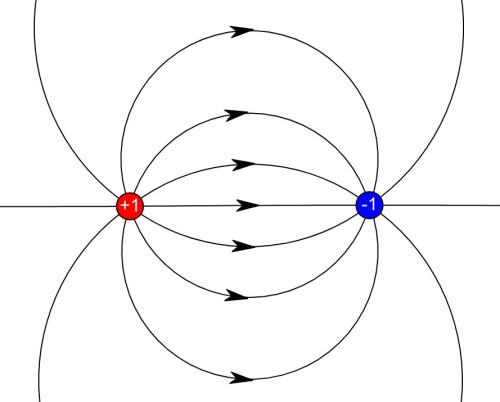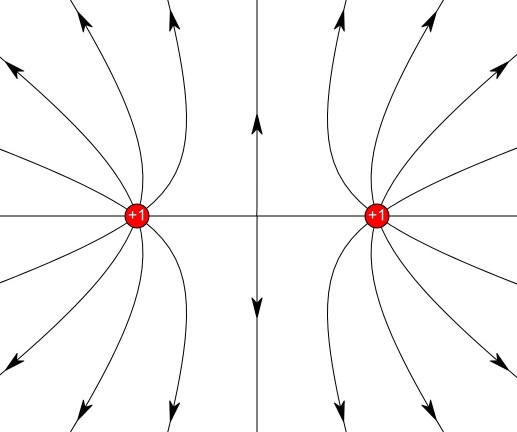Electric Chirps
Learn about Electric Charge with cute birdies.
redbirds love the chirps from bluebirds and vice versa
but bluebirds don't like bluebird chirps,
and redbirds don't like redbird chirps.
We say "Opposite birds attract, like birds repel"
Imagine you are a redbird, flying between a redbird and a bluebird:
you want to fly away from the other redbird and towards the bluebird
(you are repelled by the redbird and attracted to the bluebird)
But if you are close to the other redbird you will be very repelled by its loud chirps, and hardly hear the bluebird:
fly directly away from redbird, little influence from bluebird
As you fly away from the other redbird it is less loud and you can hear the bluebird better:
less repelled by the redbird, slightly attracted to the bluebird
You would follow a path like this:
Here are some other paths you would follow:
And here are the charge lines for a positive and negative electric charge:

electric field diagram
Our bird feels a "mental force" that repels or attracts it to other birds, and the lines show the direction at any point. For electrons it is a real force acting in the same way.
Think "if I was a tiny positive charge, what net force would I feel at that point?"
Here are some facts (check the diagram to see if they are true):
- A line begins at a positive charge and ends on a negative charge
- A line always starts or ends at right angles to a charge
- The strength of a charge's electric field decreases as you move away from it
- The density of field lines (how close they are) shows the strength of the electric field:
- Closer lines mean a stronger electric field
- Widely spaced lines mean a weaker electric field
- The lines never cross!
What about two redbirds? The only paths are away!

What if the charges are different? Have a play with Electric Field Animation.